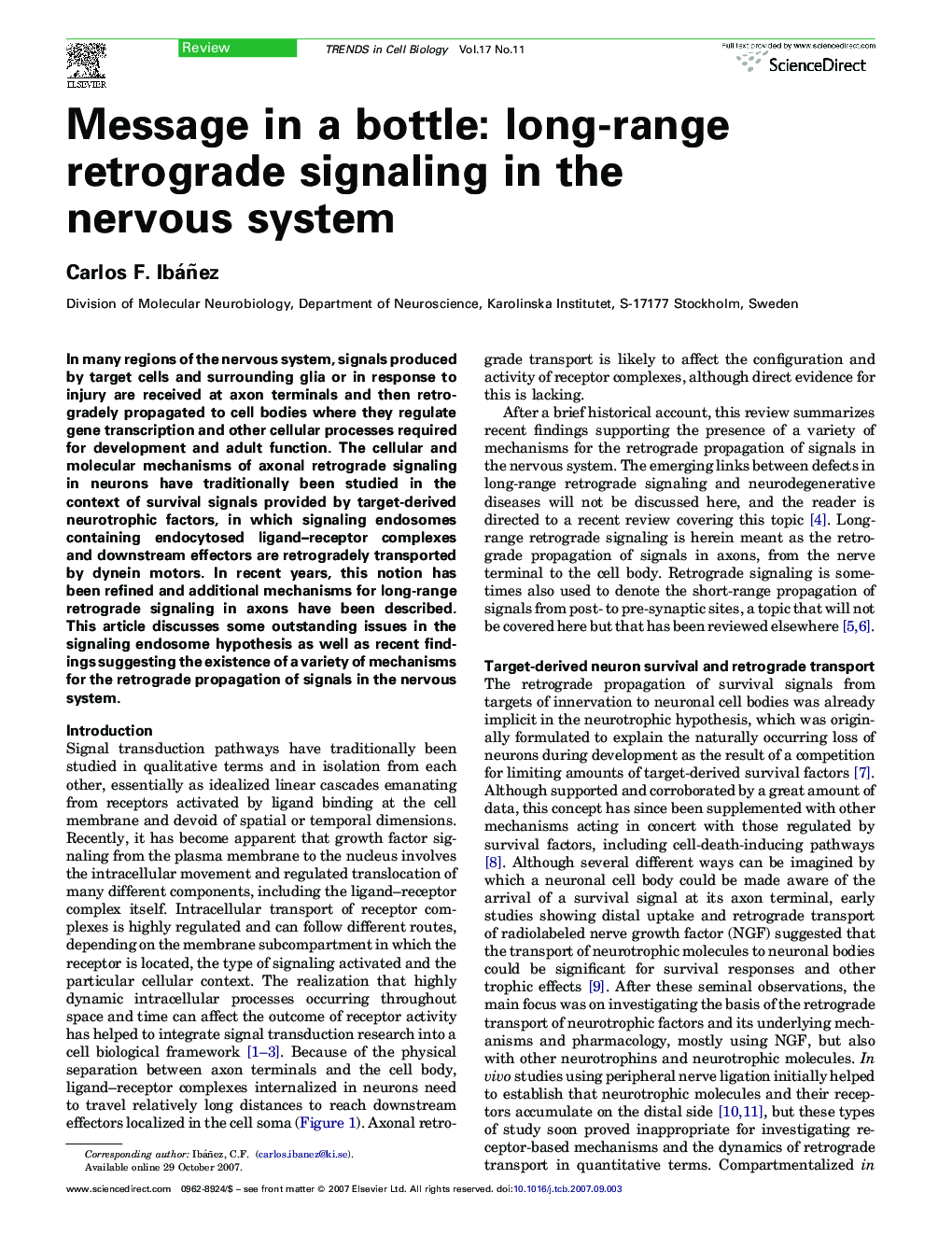| Article ID | Journal | Published Year | Pages | File Type |
|---|---|---|---|---|
| 2205020 | Trends in Cell Biology | 2007 | 10 Pages |
In many regions of the nervous system, signals produced by target cells and surrounding glia or in response to injury are received at axon terminals and then retrogradely propagated to cell bodies where they regulate gene transcription and other cellular processes required for development and adult function. The cellular and molecular mechanisms of axonal retrograde signaling in neurons have traditionally been studied in the context of survival signals provided by target-derived neurotrophic factors, in which signaling endosomes containing endocytosed ligand–receptor complexes and downstream effectors are retrogradely transported by dynein motors. In recent years, this notion has been refined and additional mechanisms for long-range retrograde signaling in axons have been described. This article discusses some outstanding issues in the signaling endosome hypothesis as well as recent findings suggesting the existence of a variety of mechanisms for the retrograde propagation of signals in the nervous system.
